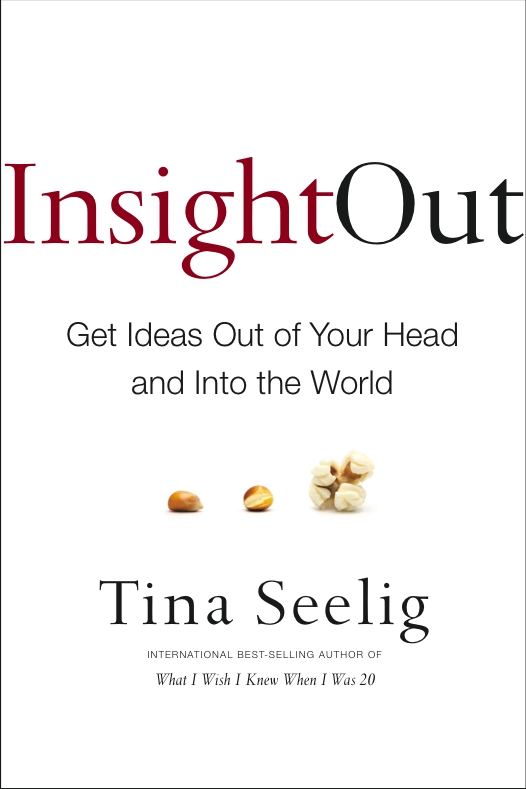The book begins with a distinction between imagination, creativity, innovation and entrepreneurship.
I have to mention this simply because this is truly a coincidence. Last week, I wrote a review of the Disney-Pixar film, Inside Out. So, when I picked up this book called Insight Out, by Tina Seelig (@Tseelig), I assumed it was a book about creativity that abounds in the Pixar team. Tina Seelig writes about creativity. Check out her last book Ingenius if you have not read it yet.
Insight Out is also a ‘how to’ book. The focus this time is on picking up an idea and getting it implemented. The book begins with Tina making a distinction between imagination, creativity, innovation and entrepreneurship. We seem to use these terms interchangeably, especially the first three terms, which tend to be used as synonyms.

Insight Out starts by describing the term ‘imagination’ as the ability to visualise that which is non- existent today. So how does one go about becoming more imaginative? By staying curious, is what Tina suggests; and by observing everything with curiosity and not judgement. Look for patterns and then see whether opportunities for improvement exist. Spend a silent hour observing something; enjoy these moments of immersion. Then use these to create your own ‘Moon Shot’ projects – a term made famous by Google. Creating a driverless car is surely like taking a shot at going to the moon for a search firm.
Creativity is all about applying imagination to solve one of those moon shot kind of problems. To solve these, we need to examine our own motivation. Those who are internally motivated stand a better chance at success. Those who rely on external factors for motivation stay dependent on others for approval and validation. Instead, keep experimenting and creating your own prototypes and mock ups.

Innovation is all about reframing problems and linking several unconnected ideas. That explains why business problems are best solved in cross-disciplinary teams. Ideas and prototypes are worthless if they cannot be implemented. Entrepreneurs are constantly trying to do way more than what is possible with resources that are way too little. They need to persist and inspire their teams. The best entrepreneurs inspire others through stories that are simple, connect with human emotions and are often counter-intuitive. This is the section that I really loved reading.
Imagination, creativity and innovation seemed to be part of one process while entrepreneurship seemed like a bolt on to the main idea. The section on entrepreneurship was really engaging, thanks to all the stories about entrepreneurs who persisted despite odds and repeated failures. The tips on how to tell stories was valuable for me. Maybe the next book should be just about that.
The author is chief learning officer, Wipro group. Follow him on Twitter @AbhijitBhaduri.
Value our content... contribute towards our growth. Even a small contribution a month would be of great help for us.
Since eight years, we have been serving the industry through daily news and stories. Our content is free for all and we plan to keep it that way.
Support HRKatha. Pay Here (All it takes is a minute)




































